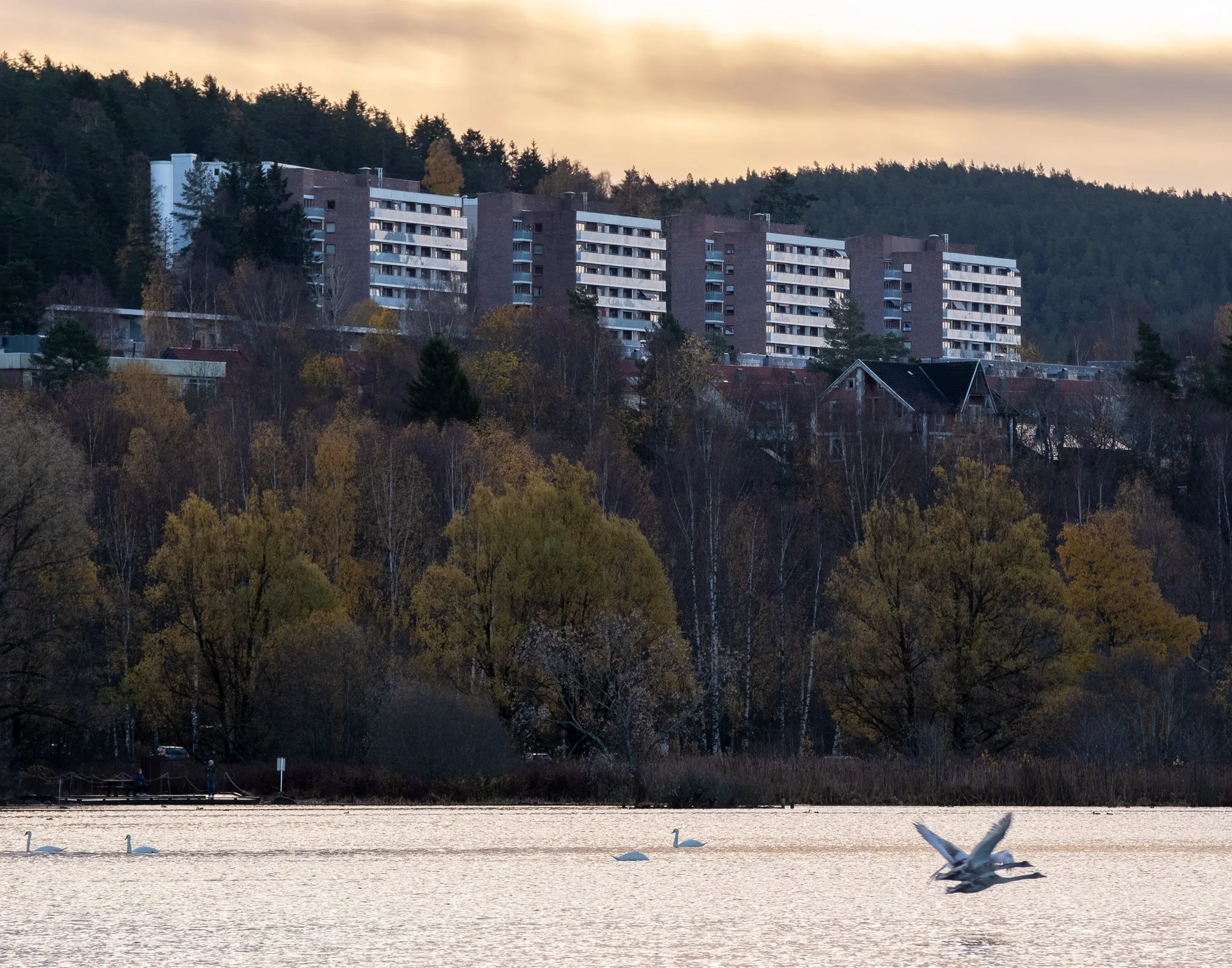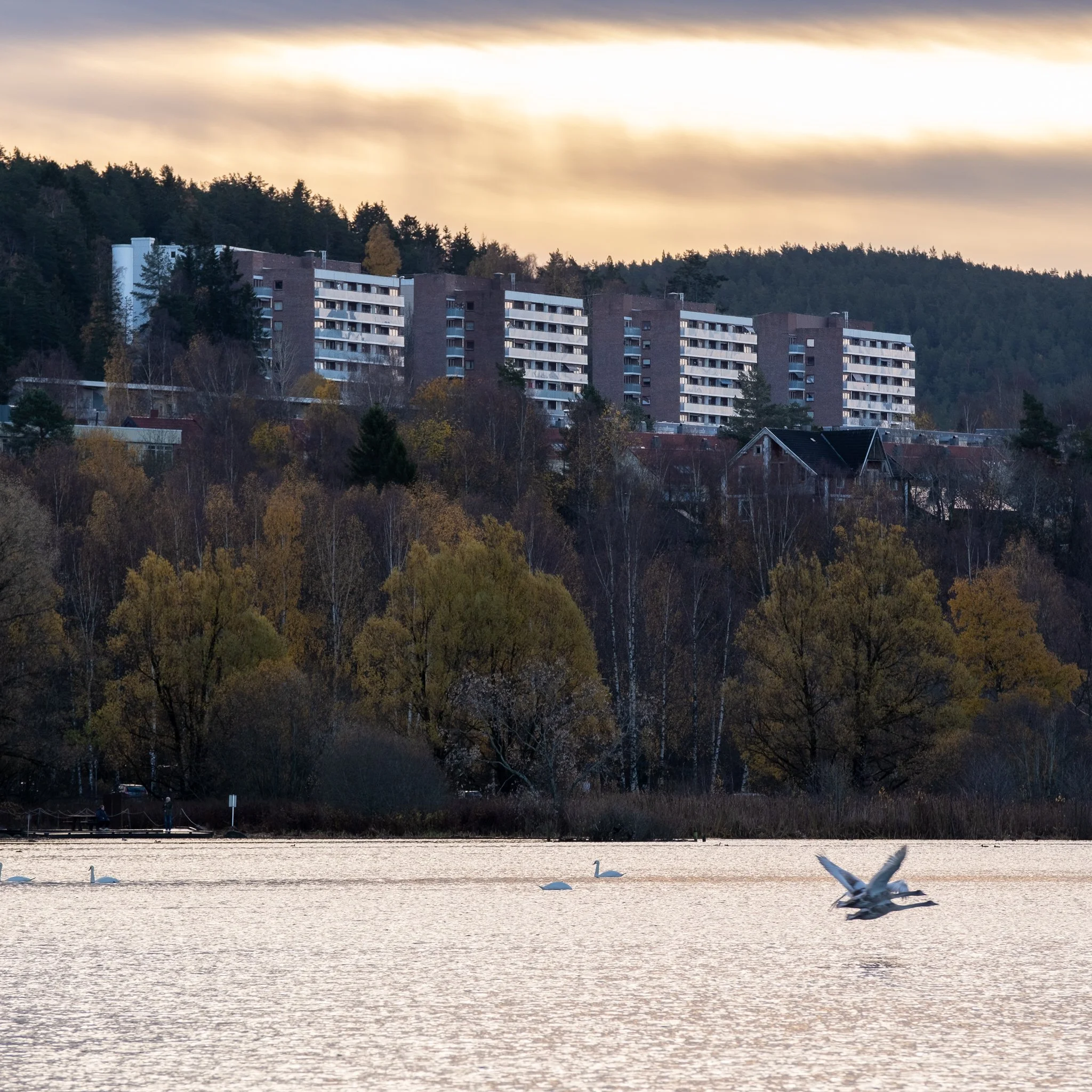østensjø
Oslo, Norway
Birds fly low over Østensjøvannet, the largest lake within Oslo. It is a preserved wetland area rich with vegetation and wildlife. In the background is Bogerud, with various housing typologies, including terraced houses and low and high-rise buildings, part of a larger post-war development for 50–60,000 residents planning with an extension of the city metro line. The houses were grouped around shared yards and open spaces, and only one parking space was set aside for every seventh home. The plans made provisions for complete neighbourhoods with community centres, kindergartens, schools, sports fields, civic and community functions and other communal functions.
Østensjø
Østensjo is located in the outer southeast part of the city, bordered by the E6 motorway and Østmarka.
Østensjø district, situated in the outer-eastern part of Oslo, is boarded by the Østmarka wilderness area. This 256 square kilometres (almost a hundred square mile) area is characterized by its open pine forest.
Notably, the district boasts the city's largest lake, which is safeguarded as a nature reserve. Most of Østensjø's development occurred in the post-war era, characterized by social building projects consisting of a mixture of high-rise buildings, blocks of flats and terraced houses. Over the subsequent decades, tens of thousands of homes emerged.
This pattern of building dense, complete neighbourhoods close to nature and connected to robust public transportation is garnering renewed appreciation and recognition. Recent municipal investments are creating new neighbourhood gathering places, invigorating public spaces and expanding community resources at these intersections of transportation and dwellings. This has the effect of undergirding the value of existing neighbourhoods. A notable example is the recently inaugurated Manglerud public swimming pool and activity hall, strategically located near a bustling commercial centre and the subway station.
The district also encompasses several single-family housing areas. A particularly intriguing residential development is the Trolltun Borettslag housing association, designated for artists, photographers, and other creatives. Built in 1959 with support from Oslo municipality, it remains popular today as a residence and community of Norwegian artists.











